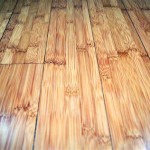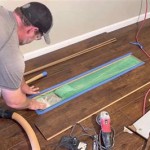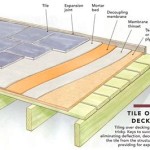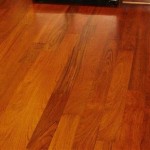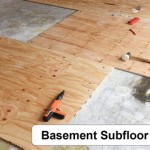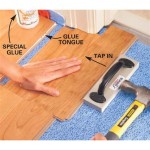How to Remove Sticky Adhesive From Wood Floors
Sticky adhesive on wood floors is a common problem that can arise from various sources, including misplaced stickers, residue from tape, or spilled glue. Addressing this issue promptly and effectively is crucial to maintaining the aesthetic appeal and structural integrity of the flooring. The process of removing adhesive from wood requires careful consideration to avoid damaging the finish or the wood itself. This article provides a comprehensive guide to effectively removing sticky adhesive from wood floors, outlining various methods and preventative measures.
Before attempting any removal method, it is essential to identify the type of adhesive involved, if possible. Different adhesives respond differently to various solvents and techniques. For instance, some adhesives dissolve readily with heat, while others require chemical solvents. Attempting the wrong method can potentially exacerbate the problem by smearing the adhesive or damaging the wood surface. Furthermore, the type of wood flooring (e.g., hardwood, laminate, engineered wood) should be considered, as some materials are more susceptible to damage from certain cleaning agents or abrasive techniques.
The first step in any adhesive removal process is to gently scrape off any loose or hardened adhesive residue. A plastic scraper or a dull knife can be used for this purpose. It is important to avoid using metal scrapers, as they can easily scratch the wood surface. When scraping, apply gentle, even pressure and work in the direction of the wood grain to minimize the risk of damage. If the adhesive is particularly hard or brittle, it may be helpful to soften it slightly before scraping by applying a warm, damp cloth for a few minutes.
After removing any loose residue, the next step is to select an appropriate removal method based on the type of adhesive and the type of wood flooring. Several options are available, ranging from household products to specialized adhesive removers. Each method has its own advantages and disadvantages, and it is important to choose the one that is most likely to be effective and least likely to cause damage.
Using Heat to Soften the Adhesive
Heat can be an effective method for softening many types of adhesives, making them easier to remove. A hairdryer is a commonly used tool for this purpose. Set the hairdryer to a low or medium heat setting and direct the airflow onto the adhesive for a few minutes. The heat will soften the adhesive, allowing it to be gently scraped away with a plastic scraper. It is crucial to avoid overheating the wood, as excessive heat can damage the finish or warp the wood itself. Regularly check the temperature of the wood by touching it with your hand. If it becomes too hot to touch, discontinue the heat application for a few moments.
Another method of applying heat is to use a warm iron. Place a clean, thick cloth, such as an old towel, over the adhesive and then gently iron over the cloth on a low setting. The heat from the iron will transfer through the cloth to the adhesive, softening it. Check the adhesive periodically to see if it has softened enough to be scraped away. The cloth acts as a barrier to protect the wood from direct contact with the iron, preventing scorching or other damage. This method is particularly effective for removing adhesive residues from stickers or tape.
When using heat, it’s imperative to proceed cautiously and monitor the wood surface for any signs of damage, such as discoloration or warping. If any damage is observed, discontinue the use of heat and try an alternative method. It is also advisable to test the heat method on an inconspicuous area of the floor before applying it to the affected area to ensure that it does not cause any adverse effects.
Employing Solvents and Cleaning Agents
Various solvents and cleaning agents can be used to dissolve or loosen adhesive residue. Before using any solvent, it is important to test it on a small, hidden area of the floor to ensure that it does not damage the finish or the wood itself. Always wear gloves and eye protection when working with solvents, and ensure adequate ventilation in the work area.
One commonly used solvent is rubbing alcohol (isopropyl alcohol). Apply a small amount of rubbing alcohol to a clean cloth and gently rub the adhesive residue. The alcohol will help to dissolve the adhesive, making it easier to remove. Avoid pouring alcohol directly onto the floor, as this can damage the finish. If the adhesive is particularly stubborn, allow the alcohol to sit on the adhesive for a few minutes before rubbing it.
Another option is white vinegar. Vinegar is a mild acid that can help to break down adhesive residue. Dilute white vinegar with water in a 1:1 ratio and apply the solution to the adhesive with a clean cloth. Allow the solution to sit for a few minutes before rubbing it away. Vinegar is a relatively safe and environmentally friendly option, but it may not be effective for all types of adhesives.
For more stubborn adhesives, a commercial adhesive remover may be necessary. These products are specifically formulated to dissolve adhesive residue and are available at most hardware stores. When using a commercial adhesive remover, carefully follow the manufacturer's instructions. Most adhesive removers should be applied to the adhesive, allowed to sit for a specified amount of time, and then wiped away with a clean cloth. It is essential to choose an adhesive remover that is specifically designed for use on wood floors to avoid damage.
Petroleum-based solvents like mineral spirits or turpentine can also be effective, but they should be used with extreme caution. These solvents are highly flammable and can damage the finish of the wood floor. If using these solvents, ensure excellent ventilation and avoid any open flames or sources of ignition. Always test the solvent on an inconspicuous area of the floor first and use it sparingly.
Utilizing Natural Oils
Natural oils, such as olive oil, coconut oil, or vegetable oil, can be surprisingly effective at removing adhesive residue. These oils work by penetrating the adhesive and weakening its bond with the wood surface. To use this method, apply a small amount of oil to the adhesive and allow it to sit for several minutes. The oil will seep into the adhesive, making it easier to scrape away. After scraping, wipe away any excess oil with a clean cloth.
The advantage of using natural oils is that they are relatively safe and non-toxic. They are also unlikely to damage the finish of the wood floor. However, they may not be effective for all types of adhesives, particularly those that are water-based. The oil will not dry like the adhesive, so it's important to wipe it up thoroughly once the adhesive is removed. Any residue left behind can attract dust and dirt, which could make the floor look dingy over time.
Mayonnaise, which is primarily made of oil, can also be used in a similar manner. Apply a thick layer of mayonnaise to the adhesive and let it sit for 15-30 minutes before wiping it away. The oil content in the mayonnaise will help to loosen the adhesive, making it easier to remove. As with other oil-based methods, be sure to thoroughly clean the area after removing the adhesive to prevent any oily residue from remaining.
After using any of these methods, it is important to clean the area thoroughly with a wood floor cleaner to remove any remaining residue and restore the shine of the floor. Follow the manufacturer's instructions for the cleaner and avoid using excessive amounts of water, as this can damage the wood. Dry the area thoroughly with a clean cloth after cleaning.
Preventing adhesive from getting onto wood floors is the best way to avoid the hassle of removal. Use appropriate floor coverings when working with adhesives, and avoid using tape or stickers directly on the floor. If adhesive does get onto the floor, address it promptly to prevent it from hardening and becoming more difficult to remove. Regular cleaning and maintenance of wood floors can also help to prevent adhesive from building up.
When dealing with very old or stubborn adhesive, it may be necessary to seek professional help. Professional floor cleaners have access to specialized equipment and cleaning agents that can effectively remove adhesive without damaging the floor. They can also assess the condition of the floor and recommend any necessary repairs or refinishing.

How To Remove Glue From Wood Floors Pete S

4 Ways To Remove Adhesive From A Hardwood Floor Wikihow

4 Ways To Remove Adhesive From A Hardwood Floor Wikihow

Removing Glue Tar Paper From Hardwood Floors Farmhouse Restoration Day In The Life

How To Easily Remove Stickers From Hard Surfaces Seattle Carpet Cleaning

4 Ways To Remove Adhesive From A Hardwood Floor Wikihow

How To Remove Glue From Wood Floors Pete S

4 Ways To Remove Adhesive From A Hardwood Floor Wikihow

How To Remove Sticky Residue From Laminate Flooring 3 Proven Fixes

How To Remove Glued Wood Flooring And Engineered On Concrete
See Also
